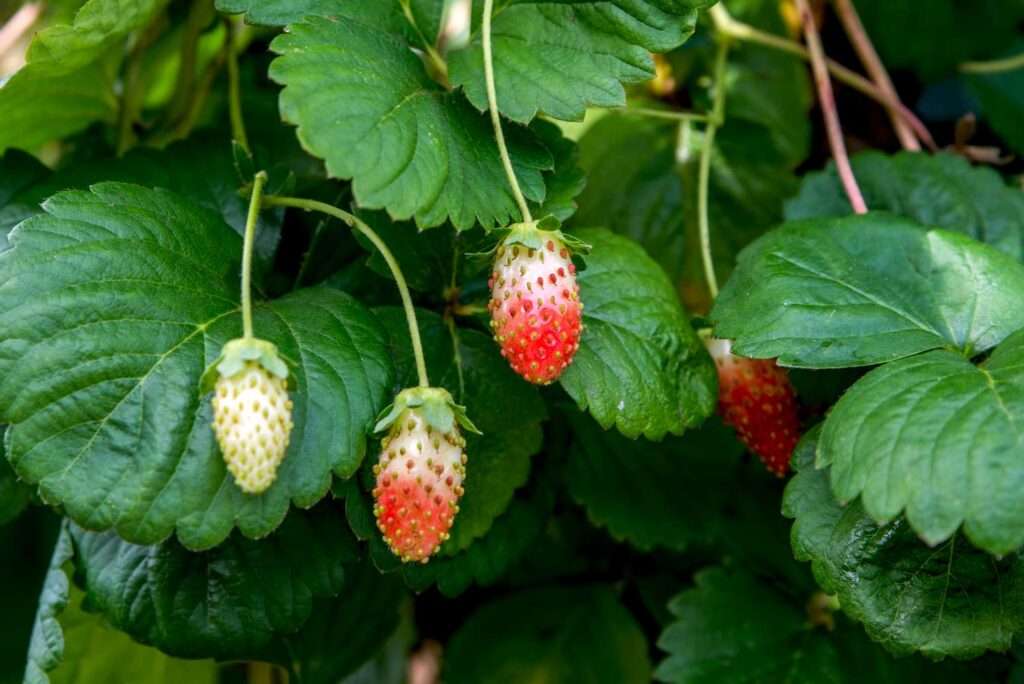
Description
The garden strawberry, also called the strawberry (Fragaria × ananassa), is a hybrid species of the genus Fragaria that is commonly grown for its fruit. Strawberries are planted all over the world.
The everbearing kind of strawberry spreads by rhizomes and stolons in sunny, open regions. With periods of hibernation in the summer and winter, active growth takes place in the cooler months of spring and autumn. Berries appear in early summer, after blooming in the spring. The foliage in autumn turns beautiful tones of red. Berries are small compared to cultivars, but they are edible, fragrant, and extremely delicious. Insects, reptiles, and mammals eat berries.
Habitat
Though its exact origins are uncertain, strawberry plants are believed to be native to Europe, Asia, and North and South America.
Uses
Strawberries include antioxidants, such as vitamin C, which can strengthen your immune system and reduce your risk of illness when exposed to pathogens. They might also help control blood sugar, reduce inflammation, and prevent diseases like diabetes, high cholesterol, cancer, heart disease, and stroke.

Varieties
Differences in height, bloom season, and distribution help distinguish four subspecies.
Throughout the Midwest, Fragaria virginiana Duchesne ssp. glauca is widely dispersed. Blooms from May through November and reaches a height of 4 inches.
Found from north to south along the east coast and west to Texas, Fragaria virginiana ssp. grayana. 8 inches tall. Blooms from March to May.
Fragaria virginiana ssp. platypetala: Also called the western wild strawberry, this subspecies ranges along the west coast of North America from Canada to Mexico. It blooms from March through July and grows to a height of 4 inches.
Fragaria virginiana ssp. Virginiana is widely found in both Canada and the United States. This subspecies blooms from March to May and reaches a height of only 4 inches.
Plant Care
- Light
Naturally, grow in fields, by the sides of roads, and on slopes that receive four to six hours of sunlight each day. It is best to find a spot with morning sunlight and afternoon shade.
- Soil
Clay and too moist soils are intolerable to these plants. Other than that, they can grow in various kinds of soil, including sandy, dry ones, and they frequently occur in open meadows and on abandoned house sites.
- Water
After sowing, give your strawberry patch some water. Wild strawberries only require watering in hot, dry weather once they have established themselves. They are resistant to dryness. Frequent but sparing watering is recommended for plants grown in pots. In between waterings, allow the soil to become slightly dry.
- Temperature and Humidity
The ideal temperature range for fruit formation and flowering is between 60 and 75 degrees Fahrenheit. Plants are shielded from extreme heat by afternoon shade, and mulch can provide further winter protection once they’ve gone dormant. USDA zones 5a through 9b are suitable for growing wild strawberries, which can tolerate lows of -20 degrees Fahrenheit. In times of excessive humidity, thin crowded plants allow for proper air circulation and prevent the growth of fungi.
- Fertilizer
Apply a balanced 10-10-10 NPK fertilizer in early spring and again in the autumn if you intend to harvest fruit. This will boost plant development and flower production. Pine mulches and acidic compost incorporated into the soil are beneficial for potting plants.
Table





